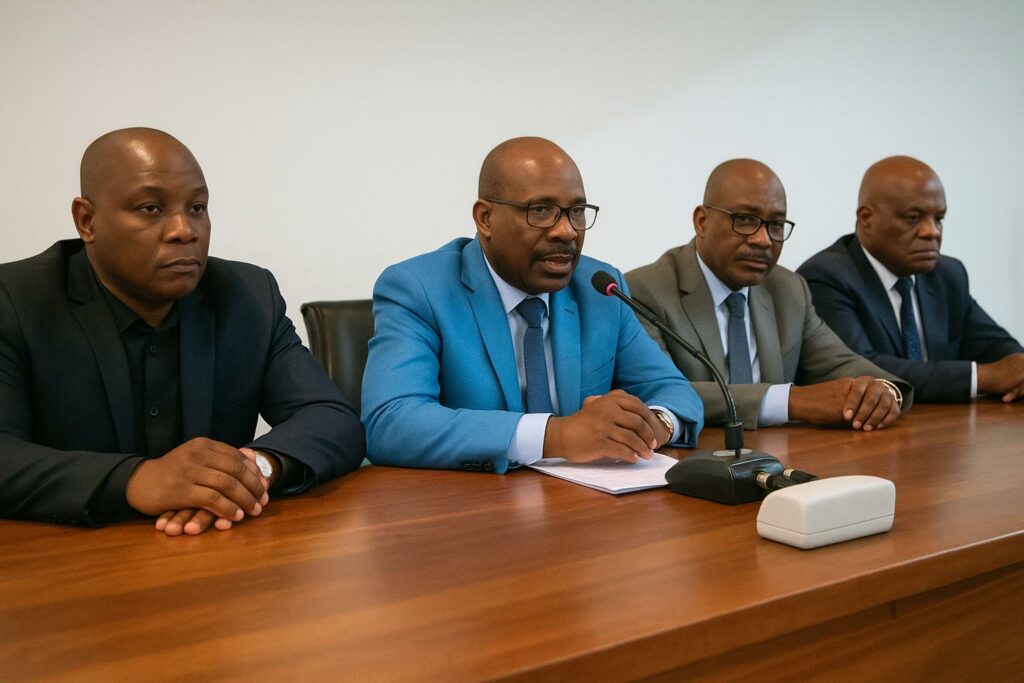A strategic medical hub for the Sangha
Standing on the banks of the Sangha River, the freshly built General Hospital of Ouesso now dominates the northern skyline, embodying the government’s stated ambition to reinforce public health infrastructure in every department (ACI). During a working visit on 17 October, the Minister of Health and Population, Jean Rosaire Ibara, expressed “satisfaction” with the pace and quality of the works, insisting that the facility is ready for a phased commissioning.
Although the project’s financial and architectural details were not publicly revisited during the tour, the minister underlined that the hospital is conceived as a referral centre capable of easing the pressure on distant facilities in Brazzaville and Owando. His remarks echoed recurrent calls from local leaders who view Ouesso as a gateway for cross-border patients from Cameroon and the Central African Republic.
Staffing priorities: 170 professionals at launch
“For a regular functioning of this hospital, more than five hundred employees will ultimately be required; however, at the opening we shall first employ one hundred and seventy qualified agents,” Jean Rosaire Ibara declared, his voice carried over the construction site’s final clean-up operations (ACI). The minister did not disclose the breakdown of specialties, yet observers note that anaesthetists, biomedical engineers and mid-wives are likely to dominate the first wave.
Recruitment, he hinted, will privilege national expertise, while complementary training sessions are envisaged on site once the technical platforms are fully energised. By progressively scaling the workforce, the ministry hopes to calibrate operating costs without delaying essential services such as emergency care, obstetrics and imaging.
Technical platforms and the electricity challenge
If pristine wards symbolise modernity, the beating heart of a hospital remains its machines. According to the minister, the installation of equipment—referred to locally as “plateaux techniques”—is now complete, positioning Ouesso to offer diagnostic and therapeutic capacities previously unavailable in the district (ACI).
Yet reliable electricity remains the decisive variable. Jean Rosaire Ibara openly “wished for the sustainability of electricity” so that scanners, laboratories and cold-chain storage can operate uninterruptedly. The comment, though cautious, acknowledges the intermittent supply that occasionally affects northern grids. Engineers on site confirmed that back-up generators are in place, but continuous public power would reduce operational costs and guarantee uninterrupted care.
Safeguarding a shared asset
Beyond the ribbon-cutting, the minister appealed to health workers and residents alike to “preserve this heritage useful to other departments and neighbouring countries” (ACI). His phrasing points to two intertwined stakes: protecting equipment from premature deterioration and maintaining a welcoming climate for cross-border cooperation.
Local civil-society representatives, present during the visit, echoed this sentiment, pledging community vigilance against vandalism and calling for regular maintenance budgets. In Ouesso’s markets, traders expressed hope that the new facility will shorten evacuation times and lower transport costs for patients who previously had to travel hundreds of kilometres southward.
Legal and economic dimensions
Under Congolese public procurement law, final acceptance of works triggers the hospital’s legal personality and paves the way for accreditation by the national regulatory authority. The ministry’s announcement therefore marks a procedural milestone that should unlock operating funds in the 2024 budget cycle.
Economically, the phased recruitment of 170 professionals is expected to inject additional disposable income into the local economy, stimulating ancillary services such as housing, catering and transport. Health economists caution, however, that cost-recovery mechanisms must remain affordable if the hospital is to fulfil its mandate of public service rather than medical tourism.
For now, the minister’s measured optimism signals a readiness to move from brick and mortar to actual patient care, provided energy reliability and community stewardship evolve hand-in-hand.

